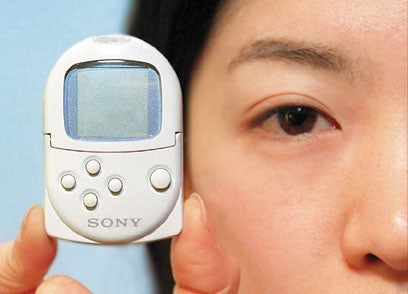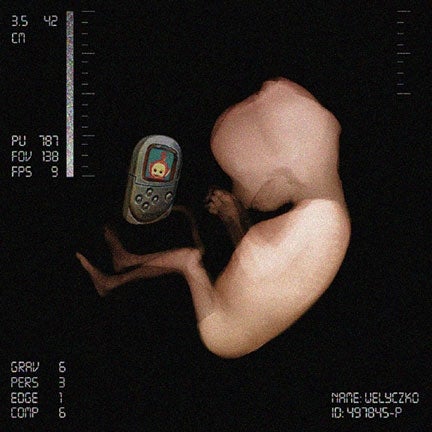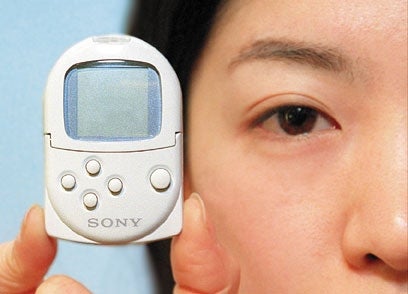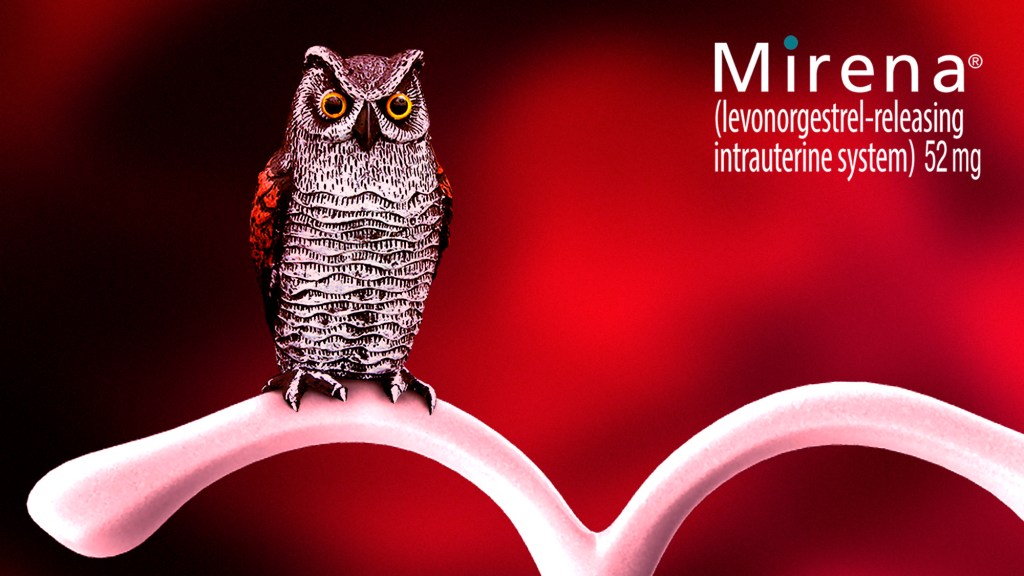LOS ANGELES—The entertainment industry is abuzz following the Sony Corporation’s unveiling Monday of the Utertron 9000, a state-of-the-art in-utero womb-entertainment system for children between the ages of minus nine months and zero.

The Utertron 9000, touted as the first prenatelevision technology ever developed, features micro-miniature multi-speaker SurrounSound, HDTV compatibility and a luxurious one and one-sixteenth-inch screen. It will make its official debut Feb. 15 at the World OB/GYN Electronics Expo in Las Vegas, and is slated to hit stores nationwide by early fall.
“Thanks to the revolutionary new Utertron 9000,” Sony vice-president of media relations Grant Bellows told reporters, “developing fetuses everywhere will soon be able to enjoy the same high-quality entertainment programming that, until now, has only been available to the post-born.”
According to manufacturers, when inserted into the vaginal opening of an expectant mother and activated using a special belt-mounted power-pack, the Utertron 9000 bonds biochemically to the uterine wall, providing the developing fetus with a much-needed entertainment outlet during its months of isolation in the womb.
“Sitting around for all those months with nothing to do, just waiting to be born, can get pretty boring,” said expectant mother Therese Doumanian, who has ordered a Utertron 9000 for her unborn child. “I sure wish I had one of those when I was developing.”
“I want my child to have all the best in life,” said a pregnant Helen Kemmerling of Topeka, KS. “Why should my baby have to wait until passing through the birth canal before getting the little extras that make life special?”
With more than 4.1 million children conceived in 1998, the under-zero set is one of the fastest-growing demographics in the U.S. And as the first product to tap into the viewership potential of this group, the Utertron 9000 is expected to have a major impact on advertisers eager to tap into the vast gestation-based market.
“The younger you can reach people with your product, the better,” said Procter & Gamble vice-president of marketing John Loesser, whose company will soon launch Crest For Embryos, a new tartar-control toothpaste that protects and whitens the tiny calcium deposits that eventually become teeth. “The idea is to foster brand-loyalty among consumers right from the start, and what better place to do so than in the womb?”

In an effort to attract unborn viewers, the major networks, working in conjunction with top obstetricians, are developing programming that specifically caters to them. Already in production are the NBC family drama Mother’s Voice and the X-Files-style paranormal drama What Lies Beyond The Opening?, as well as the made-for-TV movie Umbilicus, starring digitally neotenized versions of Ted Danson and Jimmy Smits.
Also in the works is an MTV spin-off that will offer a 24-hour rotation of music videos accompanied by gently throbbing reddish lights and heartbeat rhythms. Fetuses will have the additional option of watching pay-per-view movies, which they can select by reflexively kicking at a special controller. Advertising rates will be determined by Amnio-Nielsens drawn from a random sampling of amniotic sacs four times a year.
Despite all the excitement, the creation of programming for the fetal market was not without its difficulties.
“One of the challenges we faced in reaching these youngest of viewers was their limited capacity for sensory perception,” said Sony director of product development Derrick Kagemoto, “particularly those whose eyes and ears haven’t fully formed yet.”
To address this problem, Kagemoto said Sony and the networks have created programming specially tailored for each trimester of pregnancy, custom-made to appeal to the fetal viewer’s changing physical needs at each stage of its biological formation.
“Now, even the most primitive globule of undifferentiated cells will be able to subdivide while enjoying the very latest in hot home-entertainment hits—albeit in a highly abstract, preverbal form,” Kagemoto said. “Sony’s amazing technology is developing even faster than our target market’s digestive systems.”
In addition to the boon it represents to marketers, the Utertron 9000 offers a host of health benefits to its users. Sony doctors are recommending the product to all expectant couples as an effective “head start” to help stimulate the fetal brain.
“In a recent Sony study of pregnant women,” Sony consulting therapist Dr. Eli Wasserbaum said, “mothers implanted with the Utertron 9000 reported significantly less agitation and kicking on the part of their unborn children, who were happily engaged with stimulating, enriching TV fare.”
Further, Wasserbaum said, test fetuses with access to a Utertron 9000 were born more docile and cooperative, and less emotionally needy, than those who came to term without one.
“My first three children always wanted to be held,” Wilkes-Barre, PA, mother Meredith Schraeger said. “Little Jared, though, just watches his Utertron all day and night. Even now, two months out of the womb, he can’t seem to bear to part with it. It’s almost as if the TV has imprinted itself on his brain as his sole source of mental and emotional nourishment, and he’s incapable of any sustained human contact. And I don’t have to tell you the kind of hassles that saves a busy parent like me.”







